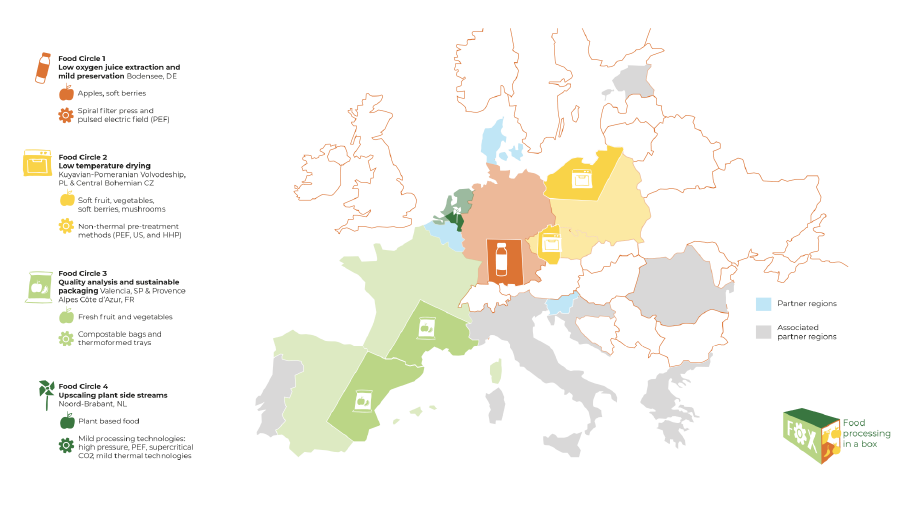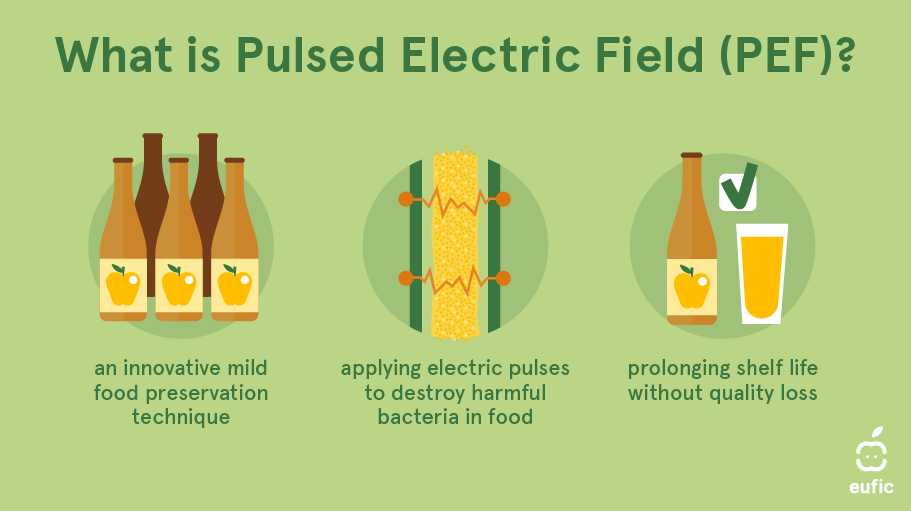Using mild processing techniques to reduce food waste: The innovative FOX project
Last Updated : 27 November 2023Have you ever wondered what happens to all the fruits and vegetables that don’t meet the standards to be sold as fresh produce or that are left behind due to overproduction? Probably a large amount is thrown away. It is estimated that 88 million tons of food are wasted annually in the European Union, equivalent to 173 kilograms per person.1 This alarming figure underscores a core societal problem that demands immediate action. Natural resources are crucial to feeding the global population, and reducing food waste is a critical step toward enhancing global food security.2 Moreover, when we waste food, we also waste the vital resources used to produce it, such as land, water, and energy, and this contributes to the ongoing climate change crisis. Every step in the production and distribution of food carries an environmental footprint, from cultivation and processing to transportation and storage.3
Food waste is the term usually used to refer to wastage that occurs at the end of the supply chain, primarily involving end consumers. The term food loss refers to wastage which takes place at the earlier stages of production, such as cultivation, harvesting, post-harvesting, and processing2. The EU-funded "FOX - Food Processing in a Box" project addressed the problem of food loss by transitioning from large-scale technologies for processing fruits and vegetables to small, flexible and mobile container units. These mobile units, equipped with mild processing technologies, such as low temperature drying and mild preservation techniques, were designed to use up surplus fruits and vegetables within local communities. By converting surplus produce into healthy and tasty products, the project also aimed to invigorate short food supply chains. It not only helped farmers and small fruit & vegetable producers prevent waste but also added value to agricultural production and the local economy.
The project was organised into four different "Food Circles," each focused on a specific location and area of investigation, using a variety of mild processing techniques to reduce food losses while preserving the nutritional quality of raw materials.

Figure 1. Representation of the four food circles and areas of action.
- Food Circle 1 developed a small-scale mobile processing unit designed to produce high-quality fruit juices and purees and tested it in the Lake Constance region in Germany. Local producers could process their goods on-site, minimizing the environmental impact of transportation and valorizing surplus fruits and vegetables, while also avoiding wasting them. The technology used in Food Circle 1 is pulsed electric field (PEF). PEF helps destroy harmful microorganisms and prolong shelf-life, while consuming less energy by operating at lower temperatures compared to conventional methods such as pasteurization by heating. This not only prevents waste but also maintains the color, flavor, and nutritional composition of the juices and purees.

Figure 2. Representation of the Pulsed Electric Field (PEF) technology.
- Food Circle 2, located in the Central Bohemian Region in the Czech Republic and/or Kuyavian-Pomeranian Voivodeship region in Poland, focused on producing dried fruits and vegetables, such as apples, strawberries, carrots, and mushrooms, which might otherwise go to waste. PEF was applied to this case too and allowed to better preserve the quality characteristics of the products, including colour and flavour. Moreover, thanks to the pre-treatment with PEF, the drying process required less energy, lowering its environmental impact.
- Food Circle 3 focused on enriching the value of fresh fruits and vegetables, typical from the region of Valencia (Spain) and Côte d’Azur (France). This circle aimed to improve the sustainability of the process for obtaining ready-to-eat fruits and vegetables and ready-to-blend smoothie packs by using more sustainable packaging systems to extend their shelf-life and reducing food waste. Circle 3 mainly focused on developing reusable transport boxes, compostable bags, and recyclable trays.
- Food Circle 4 had a unique mission: optimizing side streams of plant-based foods. By using the “Processtimator”, a software to select the best valorization pathways, this Circle sought to process these streams into ingredients, food products or feed for animals. By processing side streams into ingredients with specific functionalities, food losses could be avoided, and innovative products obtained, such as pea-based sponge cakes, pea naans and spreads. The processing concepts for plant-based side streams were be tested in field labs in Noord-Brabant, the Netherlands.
This animated video shows the different mobile units in the 4 Food Circles.
To allow for the continued exploitation of the FOX results, the project has partnered with "ZEROW," another EU-funded project focused on reducing food loss and waste through the application of systemic innovations to ensure long-term environmental and economic sustainability and support the transition to a zero-food waste system. In ZEROW it will be investigated if and how the mobile FOX unit of Food Circle 1 might be offered as a service to valorize food (side-)streams.
By addressing the issue of food loss and waste through the access to innovative processing techniques, the FOX project took a crucial step toward a more sustainable and efficient food system. By supporting the European Union's commitment to achieving Sustainable Development Goal Target 12.3, which focuses on food waste reduction, initiatives like FOX play a pivotal role in building a more sustainable future.
However, the fight against food waste requires a collective effort involving producers, consumers, institutions, and policymakers. Every individual action count, from better meal planning at home to supporting projects like FOX and collaborating on systemic innovations. Together, we have the power to diminish food waste, preserve vital resources, and pave the path toward a more sustainable and food-secure world.

This article was produced in collaboration with FOX – Food Processing in a Box . FOX has received funding from the European Union's Horizon 2020 research and innovation programme under grant agreement No 817683.
References
- European Parliament. (2017). Food waste: the problem in the EU in numbers [infographic].
- Priefer, C., Jörissen, J., & Bräutigam, K.-R. (2016). Food waste prevention in Europe – A cause-driven approach to identify the most relevant leverage points for action. Resources, Conservation and Recycling, 109, 155–165.
- Scherhaufer, S., Moates, G., Hartikainen, H., Waldron, K., & Obersteiner, G. (2018). Environmental impacts of food waste in Europe. Waste Management, 77, 98–113.